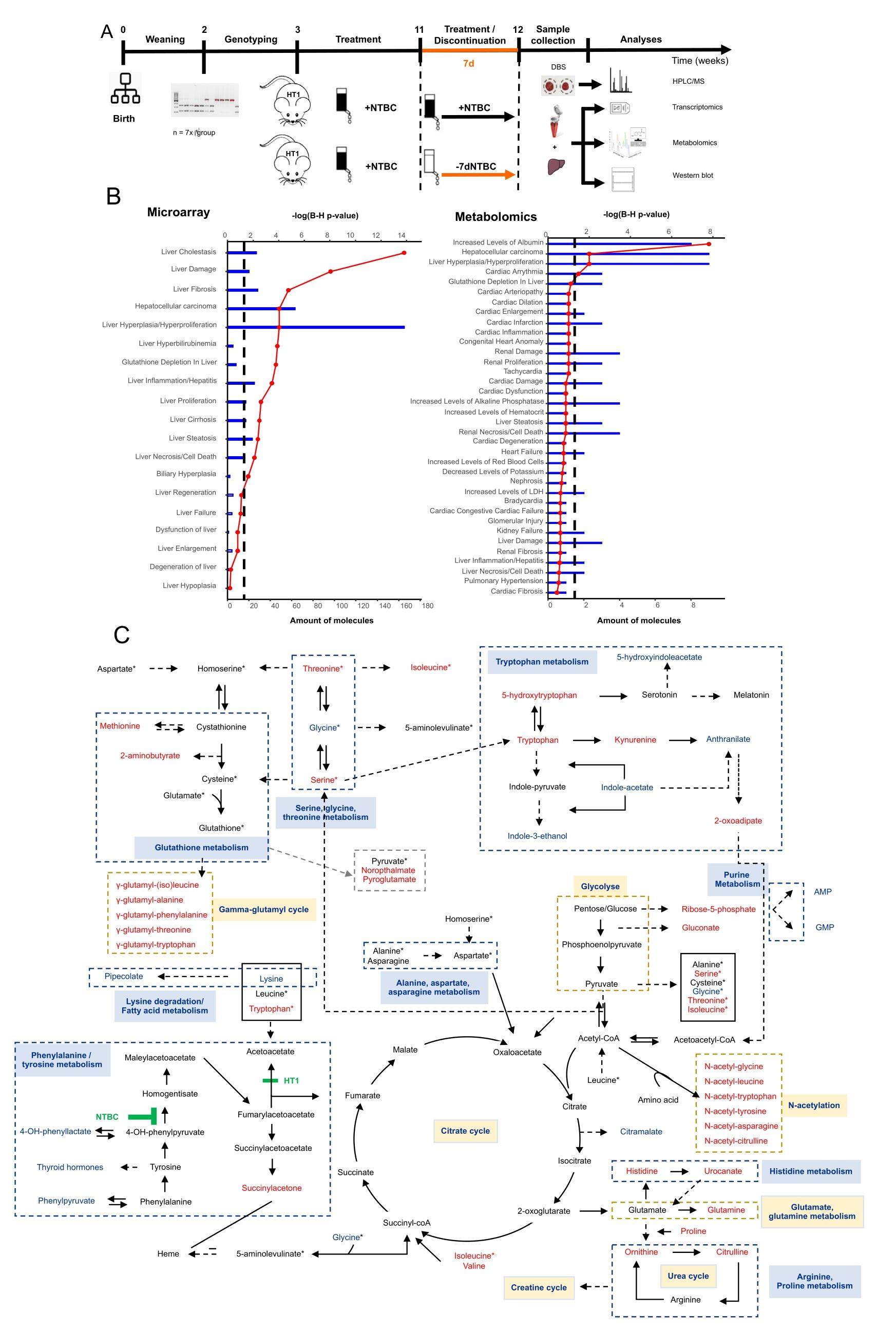
Short-term nitisinone discontinuation of hereditary tyrosinemia type 1 mice causes metabolic alterations in glutathione metabolism/biosynthesis and multiple amino acid degradation pathways


Hereditary tyrosinemia type 1 (HT1) is a life-threatening disease caused by the patient’s inability to break down tyrosine due to loss-of-function mutations in the fumarylacetoacetate hydrolase (FAH) enzyme. Currently, the only available life-saving treatment is nitisinone (NTBC). However, nitisinone therapy comes with debilitating side effects and requires a strict drug regime combined with a tyrosine- and phenylalanine-restricted diet. Consequently, therapy adherence is often experienced as an additional burden. In this study, transcriptional profiling was conducted parallel to high-resolution metabolomics on, respectively, liver tissue and serum samples of Fah-deficient mice. The experimental workflow of our study is shown in. Canonical pathway analyses showed manifest activation of the NRF2-stress response, associated with hepatocellular damage and mainly driven by a markedly increased oxidative burden. Other altered canonical pathways were primarily a downstream consequence of the latter. Furthermore, we observed an overall aminoacidemia and changes related to aminoacyl-tRNA biosynthesis, which postulates that short-term nitisinone discontinuation can already put the patient at risk for hepatocellular carcinoma development. Finally, we did not only identify changes in numerous pathways, directly and indirectly, related to the metabolism of tyrosine and glutathione but also the presence of “side-chain” metabolites, such as y-glutamyl- and N-acetyl-coupled amino acids, indicating that non-directly related pathways like phase II biotransformation reactions are also affected.
